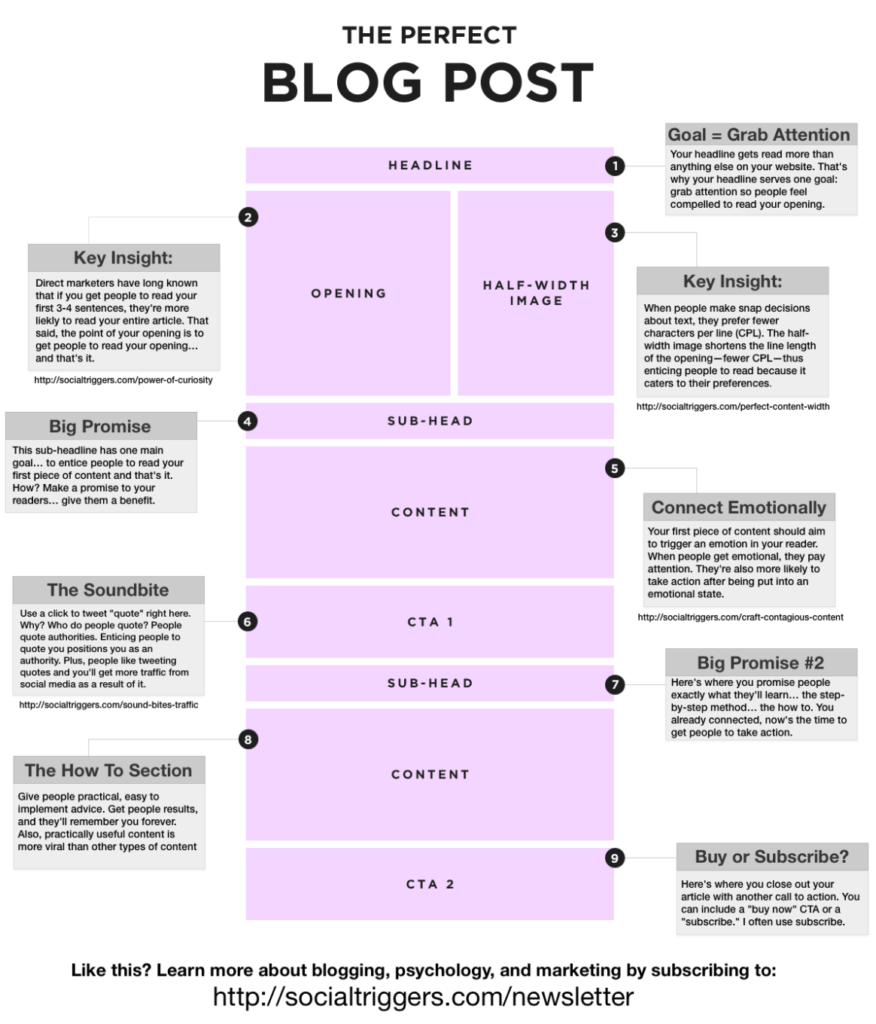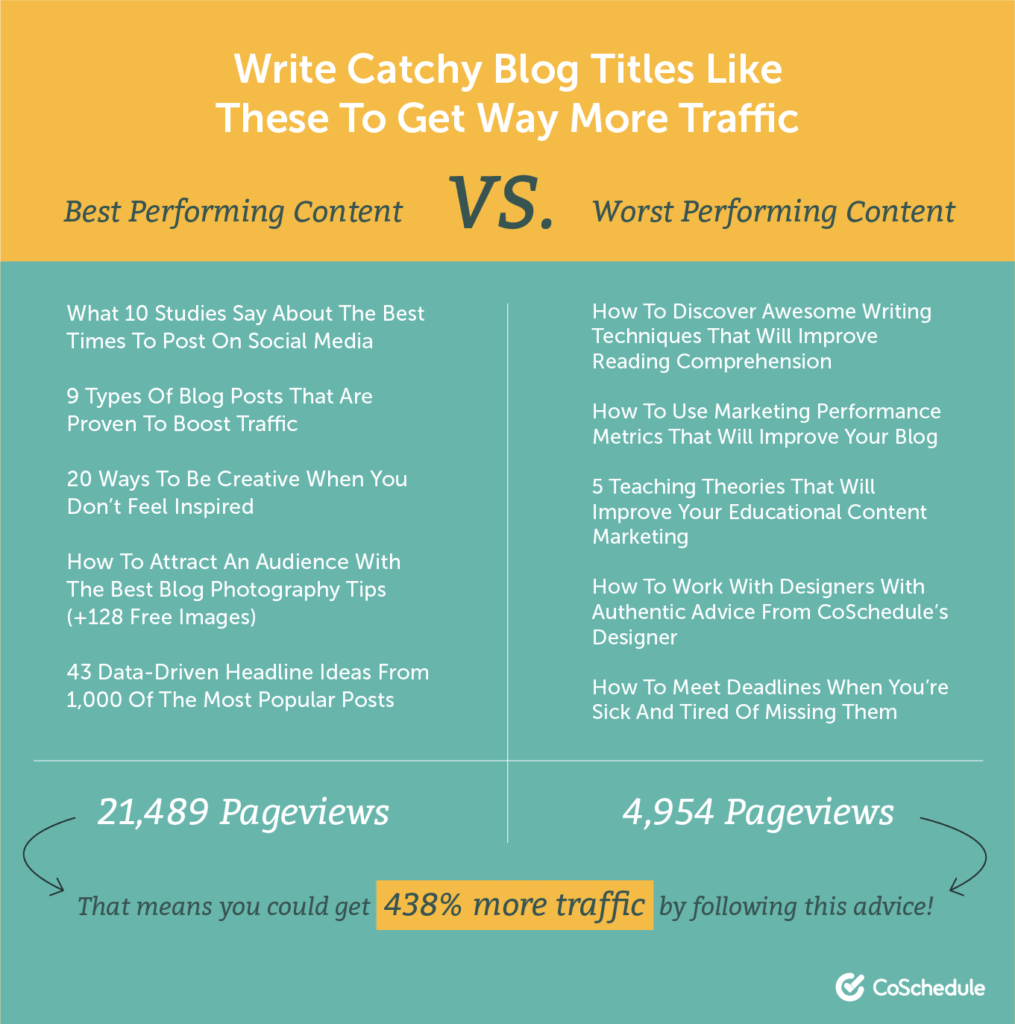Writing content and writing content optimized for better visibility in search and user-friendliness are two sides of the same coin. It’s fairly easy to write content, but it’s equally difficult to choose a topic that would engage the user and the words that would highlight the article on search ranks. It is not the same as posting an Instagram caption; you need to keep some technical rules in mind on how to write SEO-friendly article or content that is at the same time refreshing to read.
An optimized blog post with creative and relevant content has a higher chance of ranking in the top searches. Many users would be attracted to open the link and spend their time reading this blog, which is not the case with non-optimized content.

In a nutshell, the perfect recipe for an SEO-friendly blog post is creative flair, and nothing can help you if you cannot write well. However, along with a well-written blog, here is a handy checklist to ensure that your post is as SEO friendly as it can get:
SEO Checklist for Blog Posts
1. Think>>Write
Don’t rush to pen down that quick shower of thoughts that came to your mind unless you have thought it through at least ten times. This will save you time and effort later in the writing process.
It is a good practice to read articles that talk about the nitty-gritty of digital marketing so that you get an idea of what the experts recommend in terms of the words to use and the timing to let your blog post go live.
Prepare a content calendar for yourself that guides you about which topic should be published when.
As you plan to start writing your blog post, answer the following questions in as much detail as possible. This will help you create your flow of content:
- What topics will the readers like?
- What is the ultimate goal of publishing this blog? Do I want higher rankings, Or do I want to increase my website traffic?
- How will the new blog post benefit my readers?
Answering these questions will make it easier to move on to the next step.
2. Create a framework

A blog post needs to have a clear structure to enhance its readability. Every post should have:
- An introductory paragraph for the post topic
- A body that’s the soul of the post (the main content goes here)
- A summarizing paragraph that consists of the key points of the blog
Pen down what you want to mention in all three sections of the blog. This will also help you create the summary beforehand.
3. Lock the title of your blog post

Coming up with a catchy yet simple and interesting title is essential to crafting an SEO-apt blog. You can either take this up as the first thing before you decide the content for your blog, or you can do it at the end once your blog structure is ready.
The title must have these characteristics to make it stand out:
- The character limit should preferably be between 50 to 60 characters so that it is shown without any breaks in SERP (Search Engine Results Page).
- It should consist of your target keywords but avoid keyword stuffing.
- The title is the first point of meeting your reader with the content. Therefore, it should be representative of the content of the blog.
- Would you be interested in reading a blog whose title gives you boring vibes? No, right? So make the title interesting so that the reader is tempted to click on the link.
To make it easy and clear for the readers and the search engine, you can create a title with words like ‘How to’ or ‘X no of ways to’ to add some mystery to it.
4. Use headings correctly
Headings within your blog post not only give the blog a perspective but are also important from the standpoint of SEO, as they help Google target the crux of your blog post and rank it accordingly.
Subheadings of your blog post make it easy for the readers to navigate through the content. It is advised to use keywords in your subheadings, but it’s a big NO to use it in all your subheaders as it makes the text unnatural.
5. Crips and short paragraphs
Paragraphs are the body of the blog, and everyone uses them to give their blog a structure. However, what differentiates an excellent blog from a mediocre one is the way paragraphs are used. The basic rule is not to use large paragraphs as most readers prefer mobile devices for reading and large paragraphs make it difficult for them to sail through the content.
So textually, it is better to keep paragraphs shorter consisting of 3 to 4 sentences. Also, formatting should be used appropriately, like bold, italic, and underline to make the text look less boring and more aesthetically pleasing.
6. Add links to support the content
Adding hyperlinks to the content increases its credibility and makes it more effective. However, add internal links only when needed. If you have to link a factual report or product or any previously published blog that is relevant to the blog you are writing, only then add hyperlinks.
Internal links are a way to optimize the content for SEO. It has the following benefits:
- Helps the search engine discover web pages through your blog.
- Search engines can easily grasp the context of your content.
- It is a great way to reduce the website traffic bounce rate.
7. Use keywords, don’t stuff it!

It’s scot-free to include your target keywords in your posts, but it is not a clean practice to stuff your blog with just keywords and your targets; it looks forced and puts off the readers.
Confused about where to add keywords? Heed this:
- The post’s title is the best place to add keywords as it is the first thing that the reader is introduced to.
- Add it to the headings of your blog, in the paragraphs, and is some of the subheadings.
- Add it to the conclusion of the post as a takeaway.
If you are unsure about the number of keywords that can make your content look unnatural or stuffed, online tools like SEMRUSH or Google Keyword can help you understand the algorithm better. These tools will give you a list of keywords that closely match your main keywords, and you can use them in your blog.
8. Optimize the length of your blog post
The length of the blog post matters a lot. Writers are always concerned about retaining the attention of the readers and therefore try to convey more using lesser words. According to this post, a blog should be a minimum of 300 words.
Longer posts perform well in search but that doesn’t mean that shorter ones won’t rank, but anything shorter than 300 words will lose the battle even before it starts fighting. Long articles should be formatted and paragraphed well so that they engage the user and the length doesn’t bring on lethargy.
Quality rules quantity, remember that! Don’t force yourself to write long-form content if you are not comfortable doing that or are out of thoughts while writing one. Have images and internal links in your content and a takeaway that acts as a value proposition to the reader.
And the most important thing is to hold on to your horses when you publish your content as the Google ranking takes time. Be consistent in using keywords and have creative and different content that stands out from the crowd.
9. Ameliorate the meta tags
The meta tags or description tags that you see on the Google results should be optimized well. When Google chooses to show the description of your blog, then the reader gets intrigued to read the full blog. Meta tags are a 200-character summary of your blog, and it’s something that can majorly impact your website’s click rates.
10. Proofread before it goes live
Don’t rush to publish your blog before proofreading it. Proofread your blog multiple times,, and this point cannot be emphasized enough! Read it aloud to yourself, see if it makes sense to you as a reader, check for typos and grammar. And it’s just not enough for you to read it, make other people read your blog as well. If it makes sense to them or if they have any suggestions, please include those. Once all this is done, your blog is ready to go live!
This SEO checklist for blog posts is a great place to get started with your blog and website. These blog SEO tips will help you plan and execute your content in a better manner. Today, it is a fact that you are only being read well if you are ranking well on search engines. Ensure that you are taking all possible steps to get yourself listed.

FAQs
A few ways of making content SEO friendly include:
1. Including headings and subheadings:
2. Providing links to the contents which has been created earlier:
3. Conduct length optimization; high-quality content over lengthy content
4. Use keywords wisely
5. Conduct Image optimization; use keywords in the image files and add ALT tags.
5. Allowing shareability of the content
Old-school SEO writing was just about using the right keywords, but modern-day SEO relies on elements like page structure, page authority, domain authority, content relevance, knowledge and information transfer, page experience, keyword usage, and more. Some points to consider to ensure that your blog is SEO-apt include:
1. Nail your keyword research
2. Focus on User Intent and Quality
3. Take your time writing blog SEO-friendly headlines
4. Use proper heading tags
5. Optimize your page URL
6. Be strategic with your links
7. Craft an enticing meta description
8. Optimize your images
9. Ensure mobile-friendliness
10. Promote your content
Here are a few steps to writing an SEO-friendly article. This step-by-step process to write the best SEO-friendly blog posts for your brand will help you gain higher rankings.
Step 1: Start with Keyword Research
Step 2: Write an appropriate and catchy title
Step 3: Structure the blog post
Step 4: Use proper headings and subheadings
Step 5: Provide quality specific content
Step 6: Keep the paragraphs short
Step 7: Proper use of keywords without keyword stuffing
Step 8: Add alt-text to images used in the blog post
Step 9: Add meaningful links
Step 10: Optimize your meta description using the focus keyword
Step 11: Proofread before going live
Blogging is a great way to answer customer questions on your website. This helps boost the SEO quality of your website. This on-page SEO tactic is great for including relevant content and apt keywords on your website. This provides better opportunities for you to rank on search engines. Several relevant keywords don’t naturally fit in your website copy. Blogs are the best way to include these keywords which makes the website more appealing to visitors.
Search Engine Optimization or SEO is the methodology involving strategies, techniques, and tactics used to increase the number of website visitors by obtaining a high-ranking position on the search engine results pages (SERP), including Google, Bing, Yahoo, and others.
Several recent studies indicate that SEO is an important marketing tool to generate leads and acquire new customers. It has forced almost all companies to invest more in optimizing techniques, which has led to an increase in demand for SEO professionals in India.
There is no perfectly designed structure for SEO implementation to get spot-on results. The whole process is so dynamic that one can only try using a few best practices and assess whether it works for their brand.
Below are a few SEO writing tips on how to get your website to rank higher on Google’s search result pages:
1. Find interesting and rare topics to write about
2. Use keywords (without stuffing)
3. Decide on your target reader
4. Use long-form content
5. Increase page loading speed
6. Ameliorate images
7. Increase dwell time
8. Reduce bounce rate
9. Increase CTR in SERPs
10. Optimize URL
11. Utilize the ‘Skyscraper Technique’; an old-school SEO trick in which you pick up already-trending and well-performing articles and turn them into more appealing and detailed content and then share them with other blog publishers who would be willing to share your content on their page.
12. Keep your content up-to-date
13. Use inbound and outbound linking
Latest Blogs
Explore how Google’s 2025 AI search updates triggered ranking chaos. Learn actionable strategies to adapt your SEO for AI Overviews, zero-click searches, and SERP volatility. Stay ahead now.
Learn how to rank on AI search engines like ChatGPT, Perplexity, and Gemini by optimizing your content for authority, structure, and relevance. Stay ahead in AI-driven search with this strategic guide.
Explore the best healthcare SEO services for your medical practice. Improve online visibility and effectively reach more patients in need of your services.
Get your hands on the latest news!
Similar Posts

Content Analytics
8 mins read
Google I/O 2025: AI Search Shake-Up & Ranking Volatility

Artificial Intelligence
5 mins read
Top AI Blog Writing Tools for Website Monetization

Blogging
10 mins read